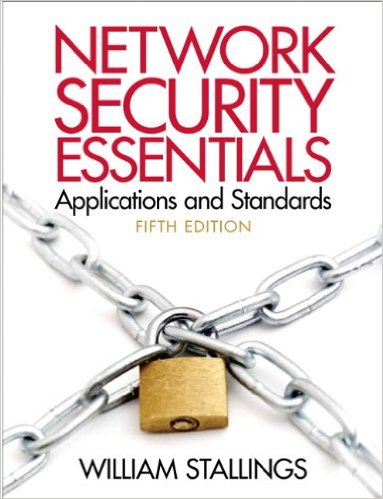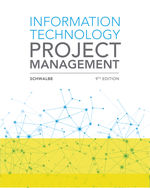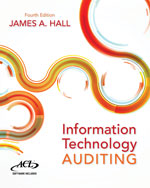This Test Bank provides an extensive set of questions designed to test your understanding of the critical concepts covered in Chapter 2: Symmetric Encryption and Message Confidentiality of the Network Security Essentials: Applications and Standards by William Stallings. The questions focus on core topics related to symmetric encryption, the Feistel structure, cipher algorithms, and block ciphers.
The test bank includes both True/False and Multiple Choice questions, making it an invaluable tool for students and educators preparing for exams or reviewing essential concepts in network security.
Key Features:
- Instant Access: Get the test bank immediately upon purchase with no waiting time.
- Aligned with Textbook Content: All questions are based on the 5th edition of Network Security Essentials Applications and Standards by William Stallings.
- Comprehensive Coverage: The test bank covers essential encryption techniques, security structures, and practical applications.
- Ideal for Exam Preparation: Perfect for students studying for exams or educators creating practice materials.
- Clear and Concise Explanations: Each question is designed to reinforce key concepts and help solidify your understanding.
Sample Questions:
True/False Questions:
- Public-key encryption is sometimes called conventional encryption, secret-key encryption, or single-key encryption.
Answer: False
Explanation: Public-key encryption uses two different keys (public and private), unlike conventional encryption that uses a single key. - One benefit of a block cipher is its ability to reuse keys
Answer: False
Explanation: Block ciphers use fixed-length data blocks, and while key reuse may be possible, it doesn’t provide a distinct advantage in terms of security. - Ciphertext is the scrambled message produced as output.
Answer: True
Explanation: Ciphertext is the encrypted form of the original plaintext message. - In symmetric encryption, security relies on keeping the algorithm secret, rather than the key itself.
Answer: False
Explanation: The security of symmetric encryption relies on the secrecy of the key, not the algorithm. - The ciphertext-only attack is the easiest to defend against, as the attacker has very little information to use.
Answer: True
Explanation: In a ciphertext-only attack, the attacker only has access to ciphertext, making it more difficult to deduce the plaintext without additional information.
Multiple Choice Questions:
- A symmetric encryption scheme has _________ ingredients.
- A. Three
- B. Six
- C. Five
- D. Four
Answer: D. Four
Explanation: A symmetric encryption scheme typically involves four components: plaintext, encryption algorithm, secret key, and ciphertext.
- _________ is the original data or message provided as input to the algorithm.
- A. DES
- B. Plaintext
- C. Encryption key
- D. Ciphertext
Answer: B. Plaintext
Explanation: The plaintext is the original data prior to encryption.
- _________ mode requires only the implementation of the encryption algorithm and not the decryption algorithm.
- A. CBC
- B. DKS
- C. ECB
- D. CTR
Answer: D. CTR
Explanation: The CTR (Counter) mode uses the encryption algorithm in a way that doesn’t require a decryption algorithm.
- A __________ processes input elements continuously, producing output one element at a time.
- A. Block cipher
- B. Cryptanalysis
- C. Keystream
- D. Stream cipher
Answer: D. Stream cipher
Explanation: A stream cipher encrypts data one bit or byte at a time.
- If the sender and receiver share the same key, the system is known as _________ encryption.
- A. Asymmetric
- B. Two-key
- C. Symmetric
- D. Public-key
Answer: C. Symmetric
Explanation: In symmetric encryption, the same key is used for both encrypting and decrypting the data.
- If the sender and receiver use different keys, the system is called __________ encryption.
- A. Secret-key
- B. Conventional
- C. Single-key
- D. Asymmetric
Answer: D. Asymmetric
Explanation: Asymmetric encryption relies on a pair of keys—public and private—for both encryption and decryption..
Why Choose This Test Bank?
- Efficient Study Aid: The questions are designed to focus on key concepts in network security, allowing you to quickly grasp essential information.
- Enhanced Learning Experience: Clear and comprehensive explanations for each question ensure that you understand the underlying concepts and how they apply to real-world network security.
- Perfect for Exam Preparation: With its focused content on symmetric encryption and message confidentiality, this test bank is ideal for preparing for exams in network security and cryptography.
- Comprehensive Resource: The test bank covers various aspects of encryption, including Feistel structures, cipher modes, and the use of keys in cryptographic systems.
This test bank is a valuable tool for students, professionals, and educators alike. It will help you not only review encryption principles but also build a solid foundation for understanding advanced network security concepts. Whether you’re studying for an exam or looking to deepen your understanding of cryptography, this test bank has everything you need.












Reviews
There are no reviews yet.